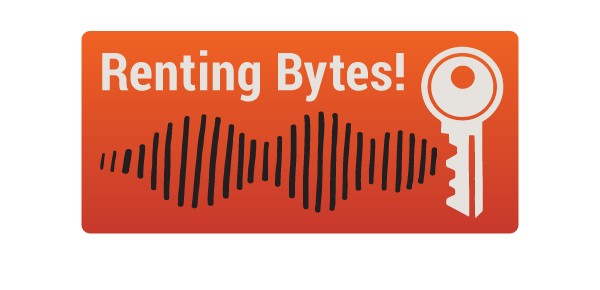Housing News Digest
Housing News Digest
The Tenants' Union Housing News Digest compiles our pick of items from all the latest tenancy and housing media, sent once per week, on Thursdays.
Below is the Digest archive from November 2020 onwards. From time to time you will find additional items in the archive that did not make it into the weekly Digest email. Earlier archives are here, where you can also find additional digests by other organisations.
Our main email newsletter, Tenant News is sent once every two months. You can subscribe or update your subscription preferences for any of our email newsletters here.
See notes about the Digest and a list of other contributors here. Many thanks to those contributors for sharing links with us.
We love sharing the news and hope you find it informative! We're very happy to deliver it for free, but if you find it valuable, can you help cover the extra costs incurred by making a donation?
Archive
The year ahead: a look at the biggest housing issues for 2022
Inside Housing reporters Inside Housing (Paywall)From the United Kingdom ... Last year was a big one for the social housing sector, with development slowing down due to rising fire safety and material costs, zero-carbon requirements and poor housing conditions being exposed. Inside Housing’s news team runs through what social landlords can expect and what to look out for this year. ... The government has promised that a renters’ white paper will be published at some point this year. While the policies set out in the white paper will primarily cover the private rented sector, it is likely that it will also have ramifications for the social housing sector. Most notably, ministers have said the paper will lay the grounds to end Section 21 ‘no fault’ evictions. Landlords should watch out for any changes to the eviction process.
https://www.insidehousing.co.uk/insight/insight/the-year-ahead-a…
# International, Public and community housing, Rent, Housing market, No-grounds evictions.Elderly Australians ditch residential aged care for home care during pandemic
Dana Daniel and Jennifer Duke The Sydney Morning Herald (Paywall)The number of elderly Australians receiving home care has almost overtaken the number of people living in residential aged care after a boost to packages during the pandemic, but tens of thousands are still waiting. The Productivity Commission’s Report on Government Services, to be published on Tuesday, shows that the total number of home care packages hit 236,554 last financial year, while the population of residential aged care remained stable at 243,117 despite an ageing population. The report also shows a decline in spending on public housing. ... [But] The overall spend on social housing, including state-owned and managed Indigenous housing, increased to $4.5 billion from $4.3 billion. ... Opposition leader Anthony Albanese has promised that if Labor wins the upcoming federal election he will put $10 billion into a future fund to help with housing affordability, including building 30,000 social housing and affordable housing units for essential workers. You will find a link to the Productivity Commission's report at: [https://www.pc.gov.au/research/ongoing/report-on-government-services]
https://www.smh.com.au/politics/federal/elderly-australians-ditc…
# Australia, Public and community housing, Affordable housing, Housing market, Older people.Almost half of people seeking help for homelessness in NSW in past year did not get it, report finds
Stephanie Convery The Guardian (No paywall)Nearly half of all people who sought help with homelessness last year in New South Wales did not get it, a new report has shown. According to data from the Productivity Commission’s annual report on government services, 48.2% of people in Australia’s most populous state who asked for accommodation assistance from specialist homelessness services in the 2020-2021 financial year went without. That figure represents a substantial increase from five years ago, when 37.2% of people did not receive the help they had requested. You will find a link to the Productivity Commission's report at: [https://www.pc.gov.au/research/ongoing/report-on-government-services]
https://www.theguardian.com/australia-news/2022/jan/25/almost-ha…
# Australia, Homelessness, Housing market.Perfect storm’: fears for WA homeless people as data reveals low Covid vaccination rate
Luke Henriques-Gomes The Guardian (No paywall)Vaccination rates among Perth’s growing homeless community may be as low as 45%, according to comprehensive data collected by one service provider, raising fears the vulnerable cohort will be caught in a “perfect storm” when Western Australia does open its borders. The premier, Mark McGowan, announced last week the state would delay plans to lift the hard border on 5 February, a decision that sparked anger among some residents but was also greeted with relief by others, including some homelessness advocates. While WA avoided a crisis of Covid deaths, homelessness became a hot-button issue amid a spate of rough sleepers dying on the streets of Perth. Real-time data collected by Shelter WA says there are now about 500 people sleeping rough in Perth, and about 1,000 people experiencing homelessness overall.
https://www.theguardian.com/australia-news/2022/jan/26/perfect-s…
# Australia, Coronavirus COVID-19, Health, Homelessness.The verdict is in: George Osborne’s help-to-buy scheme has been an utter disaster
Polly Tornbee The Guardian (No paywall)According to a damning Lords report, it isn’t just a waste of £29bn, it has made Britain’s unequal housing market even worse. ... So it shouldn’t be a surprise that a shocking report on a Conservative flagship housing policy fell below the news radar. The Lords-built environment committee has revealed that all of the £29bn spent on the help-to-buy scheme has been wasted. The scheme gives subsidies for homeownership, but all they do is “inflate prices by more than their subsidy value”. They “do not provide good value for money”, which would be “better spent on increasing housing supply.” ... Bringing up a family in a private-rented home means living under the shadow of eviction, with private landlords using section 21 orders to evict tenants for no reason. I once followed the misfortunes of one family that was forced to move, time and again, sometimes having to move their children’s schools too, often living in squalor, once through a long winter with a broken boiler. They weren’t destitute, both parents were in work, but their children were deprived of a permanent home in their early years. Last month’s excoriating report by the National Audit Office (NAO) on private renting found that in 29,000 instances in one year, “households were, or were at risk of being made homeless following an eviction that was not their fault”.
https://www.theguardian.com/commentisfree/2022/jan/25/george-osb…
# International, Rent, Home ownership, Homelessness, Housing market, No-grounds evictions.Maximising for coolth: How a popular Sydney park will create its own cool microclimate
Julie Power The Sydney Morning Herald (Paywall)Coolth. The word isn’t used as often as warmth. That could change with a $6 million pilot project – thought to be a world first – that will use artificial intelligence to reduce summer temperatures at a major Sydney park by up to four degrees compared to the surrounding precinct. Under the project, Bicentennial Park’s 40 hectares in Sydney Olympic Park will become a cooler microclimate, a green respite for the 80,000 people who by 2023 will live or work there every day.
https://www.smh.com.au/national/nsw/maximising-for-coolth-how-a-…
# NSW, Climate change, Planning and development.Rate rises may slow housing market but no affordability improvement in sight
Jennifer Duke The Sydney Morning Herald (No paywall)Earlier than expected interest rate rises are unlikely to dramatically hit the housing market and economists and housing analysts say affordability will continue to be a concern in Sydney and Melbourne. ... The rapid rise in property values has resulted in unions, social welfare groups, property industry organisations and housing providers creating a new National Affordable Housing Alliance calling on the federal, state and territory governments to develop social and affordable housing across the country. The group’s members include the Australian Council of Trade Unions, Australian Council of Social Service, Industry Super Australia, Housing Industry Association, Master Builders Australia, the Property Council of Australia, National Shelter, Homelessness Australia and the Community Housing Industry Association. The proposal includes new tax offsets to encourage institutional investment in affordable housing, a $20 billion Social and Affordable Housing Future Fund to deliver enough supply of homes, support build-to-rent housing and change state and territory planning to divert a portion of infrastructure contributions and levies paid by developers into providing social housing.
https://www.smh.com.au/politics/federal/rate-rises-may-slow-hous…
# Australia, Public and community housing, Affordable housing, Housing affordability, Housing market, Planning and development.Even pricey city-centre flats help everyone move up the property ladder
Torsten Bell The Guardian (No paywall)High housing costs are a disaster for living standards, costing private renters more than 30% of their income and giving London the highest poverty rate in the UK. The economists’ answer is to build more homes in high-cost areas, but that’s easier said than done. Developments are often opposed from the right, for reducing local house prices, and the left, as gentrification. Opponents accurately say city-centre developers build for richer customers. But the lasting impact of construction goes beyond the immediate effect of who moves into that property, with the new owner moving out of their existing home and creating an opportunity for someone else. As that continues, it means building in one area can help reduce costs elsewhere. But does that happen in practice?
https://www.theguardian.com/commentisfree/2022/jan/23/even-price…
# International, Housing market.



